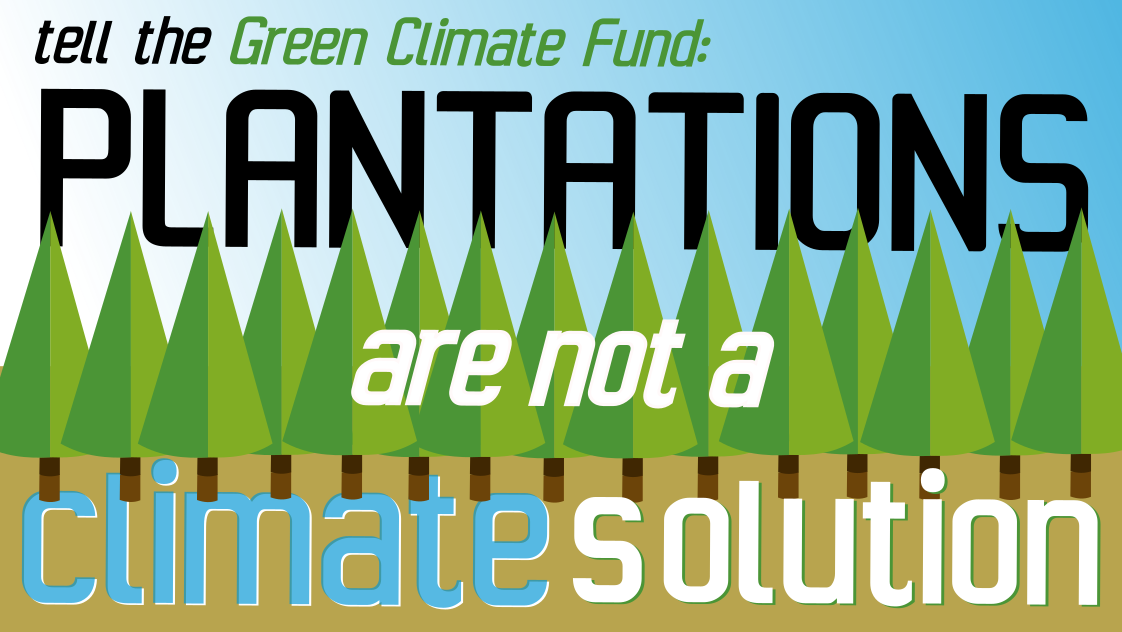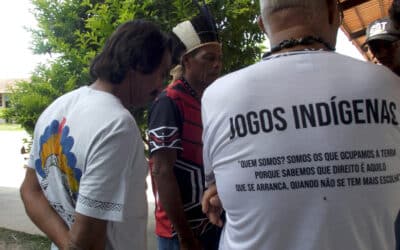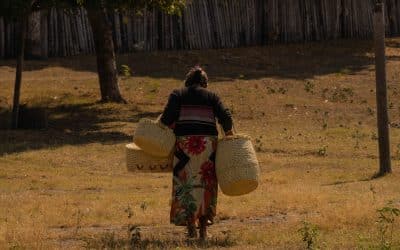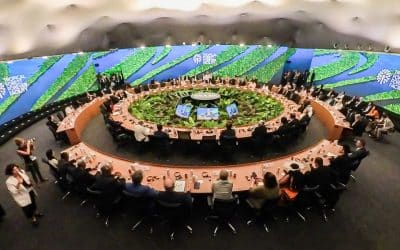Co-auteurs: la Coalition mondiale des forêts et nos groupes membres HEÑÓI (Paraguay), Iniciativa Amotocodie (Paraguay), Sobrevivencia/AmiEs de la terres (Paraguay), The Development Institute (Ghana), The National Association of Professional Environmentalists (NAPE, Ouganda)
C’est une idée tellement simple: planter un arbre, le laisser grandir, et chaque année, il va capter toujours plus de carbone de l’atmosphère. Voilà la logique qui sous-tend la proposition que le Fonds Arbaro a présentée au Fonds vert pour le climat (GCF), qui devra prendre une décision lors de son instance du 10 mars prochain. Toutefois, les plans d’Arbaro se projettent sur une échelle bien plus grande: avec les 25 millions de dollars US provenant du FVC, ajoutés aux 175 millions de dollars US de cofinancement venant majoritairement d’autres sources publiques, la proposition vise à créer 75 000 hectares de plantations forestières commerciales dans sept pays cibles, dont le Paraguay, le Ghana et l’Ouganda.
Continuez à lire en anglais…
Arbaro claims that over the life of the project 20 million tonnes of carbon will be captured by the plantations. But this figure relies on a number of highly optimistic assumptions, as described in the “best case scenario” presented in the proposal. A far more likely outcome, as evidenced by a great number of plantation projects in Latin America and Sub-Saharan Africa and a wealth of scientific literature, is that the plantations will sequester far less due to many different factors, including: land clearance before planting and the displacement of the former land use (eg agriculture) into forest areas (Arbaro’s calculations include zero baseline losses or « leakage »), a loss of soil carbon and productivity over time due to erosion and nutrient exhaustion, and the fact that a significant proportion of the wood is very likely to either be burned as charcoal or biomass, or in wildfires that are made more intensive and extensive by large areas of plantation.
Further still, Arbaro’s business plan hinges on an “exit” from its investments after 15 years from the date of the fund’s creation (2018), when capital and profit made will be returned to investors. Once exited, neither Arbaro or GCF will have any say over what happens to the plantations or the wood once it is harvested from them, and therefore there can be no guarantee that any of the carbon stored in the trees will remain stored for any length of time. Climate finance should be ensuring mitigation over meaningful timescales, not a maximum of 15 years!
Arbaro is a relative sapling in the plantations finance world with just two investments representing a total productive area of 15,000 ha in Paraguay, Ghana and Sierra Leone, but they offer some clues as to what direction its future expansion could take. The plantations in Paraguay are eucalyptus, an invasive, fast-growing, thirsty, fire-prone and exotic tree species, and in West Africa some of the wood is produced for the biomass energy and charcoal sectors. Further still, Arbaro’s co-founder and part owner, Unique Forestry, has large-scale investments in Paraguay through PAYCO Forestry, which uses eucalyptus plantations to support the intensification of highly-unsustainable livestock production (in part through selling carbon credits) and produces woodfuel, which is likely used to dry one of PAYCO’s other products, genetically-modified soybeans. There have also been reports of violent land conflicts with Indigenous Peoples and peasant communities over PAYCO’s operations.
A long history of conflict-ridden plantation projects in the countries targeted by Arbaro, added to its own track record and that of its owners, tells us that the large-scale expansion of plantations that GCF is being asked to finance will be no different. Those who pay the highest price are likely to be women, who are disproportionately impacted by such large-scale changes to land use, especially where agriculture and access to grazing is displaced. They are also more likely to be denied land rights and have no access to legal support. Arbaro’s offer of limited employment opportunities and “benefit sharing” cannot compensate for this.
This proposal is also part of a dangerous trend whereby GCF is prioritising private-sector equity investments as opposed to traditional grant-making to more accountable bodies. In Arbaro’s case, this concept has been taken to another level as the equity stake that GCF buys into Arbaro will then be reinvested into another 8-12 projects/companies across the seven target countries. This means that GCF will be two steps removed from the actual forestry companies that are creating the plantations. In fact, other than identifying seven countries and a vague idea about producing timber for the as yet unidentified panel board and veneer market, Arbaro gives no indication of which companies or areas it is planning to invest in. Such investment decisions, despite being funded with public money, would be entirely Arbaro’s to make, and entirely implemented by unknown private companies, with unknown track-records and unaccountable to GCF.
The case against GCF’s involvement in the Arbaro Fund is overwhelming: carbon mitigation claims are highly questionable and over frankly laughable timescales, existing examples of Arbaro’s investments paint a worrying picture of damaging eucalyptus plantations being used to support carbon-intensive industries, and there can be no public accountability to ensure that impacts on communities and biodiversity are avoided. GCF’s mission is to drive a paradigm shift in the global response to climate change through transformational, low-emissions and climate-resilient development; Arbaro’s plantations achieve none of these.
Our message to the GCF board is clear: reject Arbaro’s plantations.
Get involved in the campaign, sign World Rainforest Movement’s open letter to the Green Climate Fund!
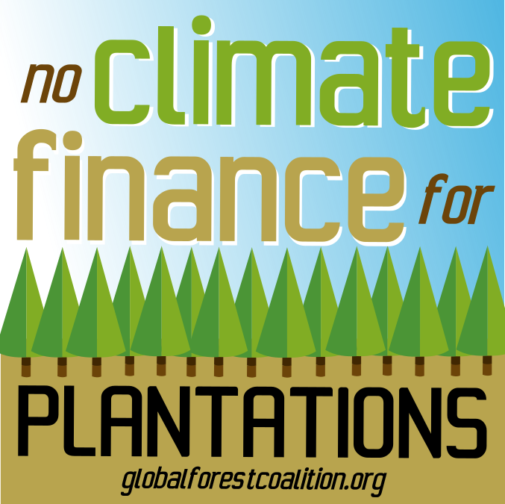
|
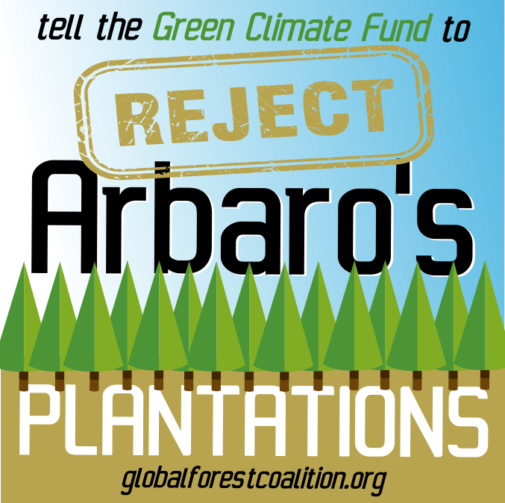
|
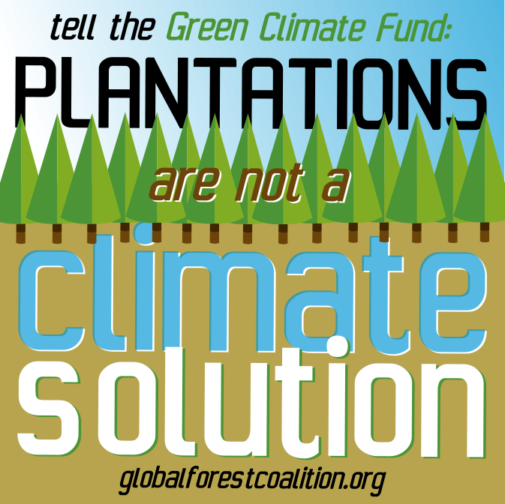
|

